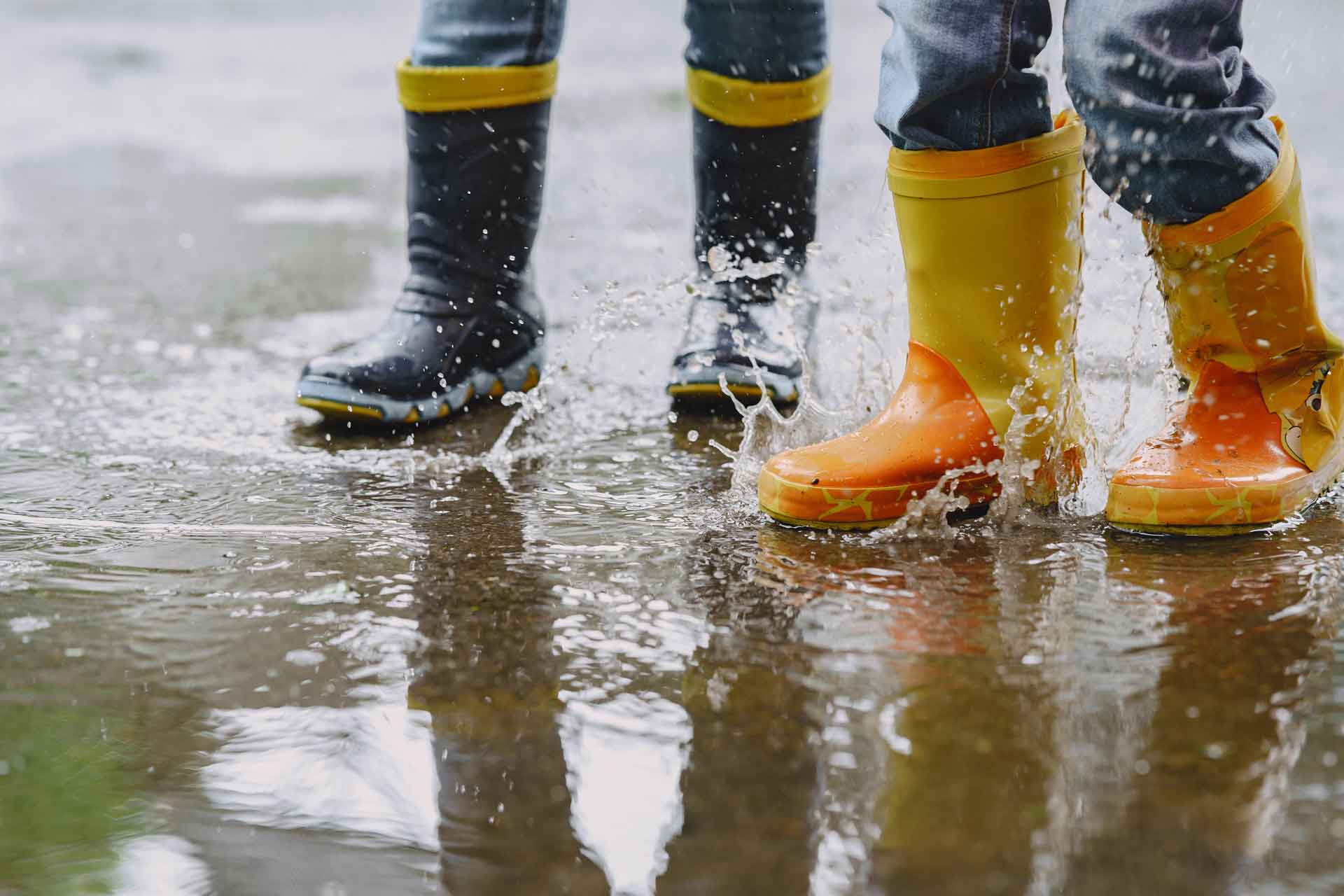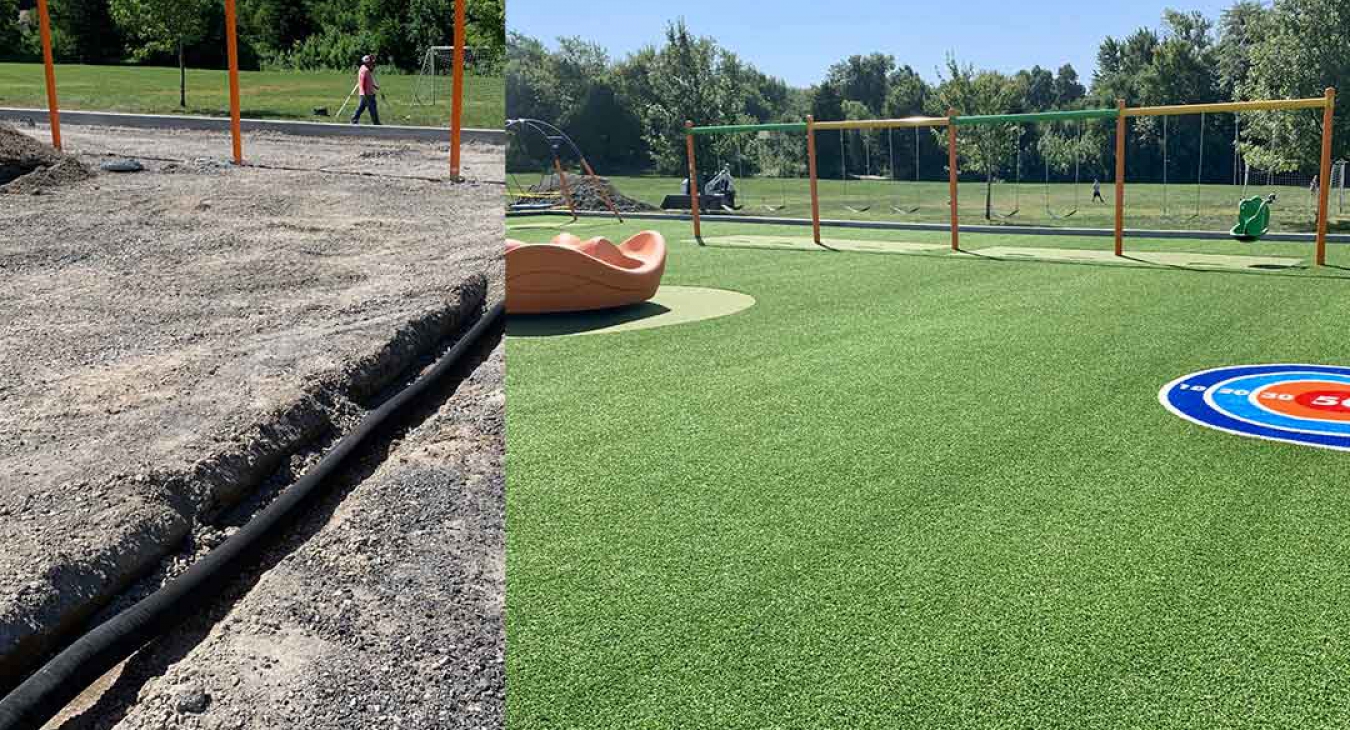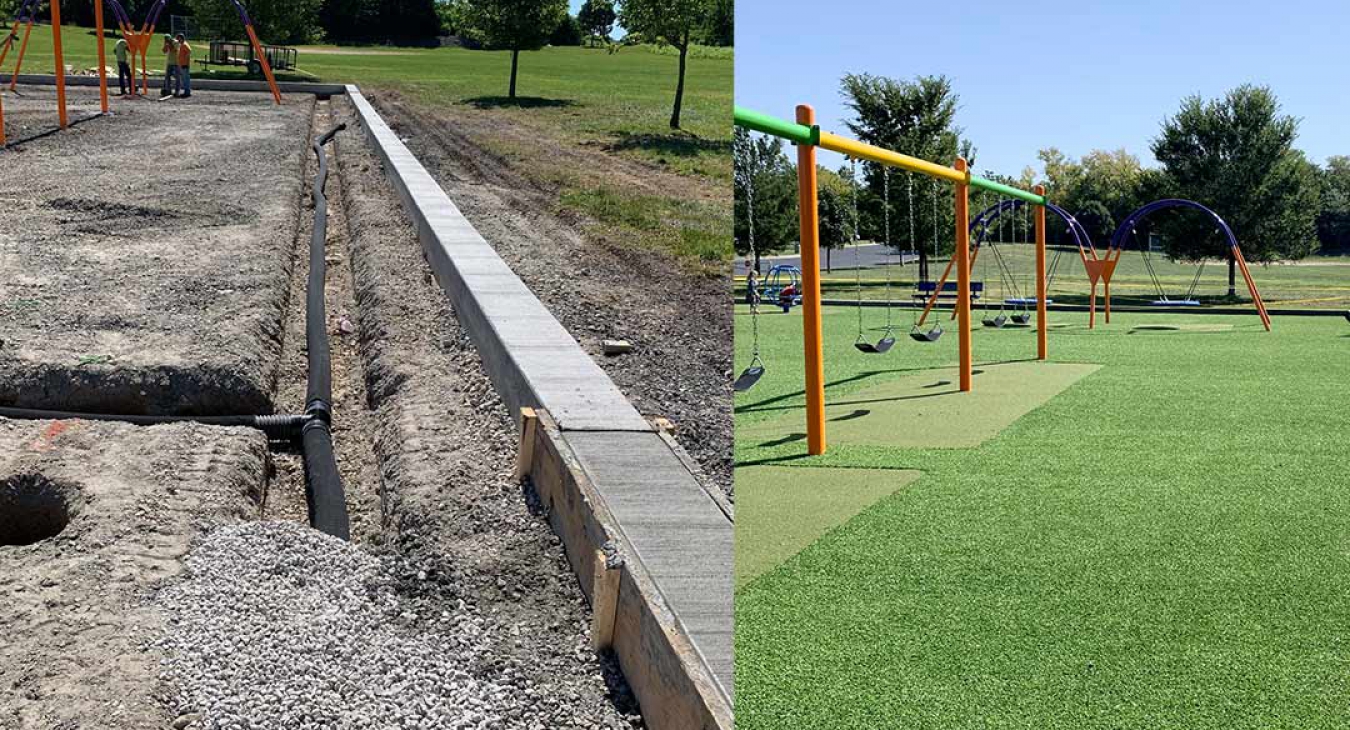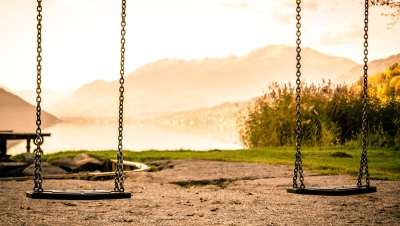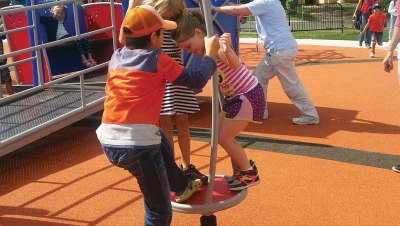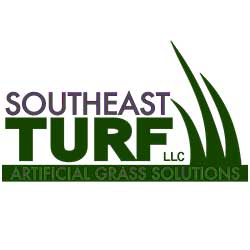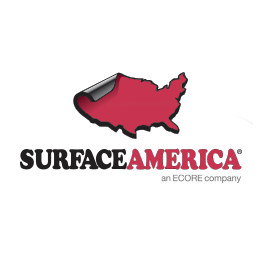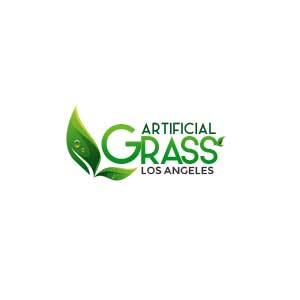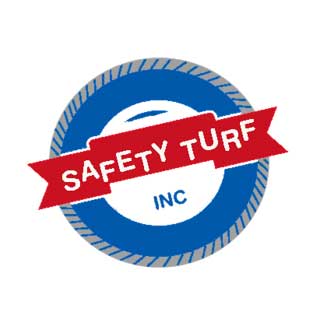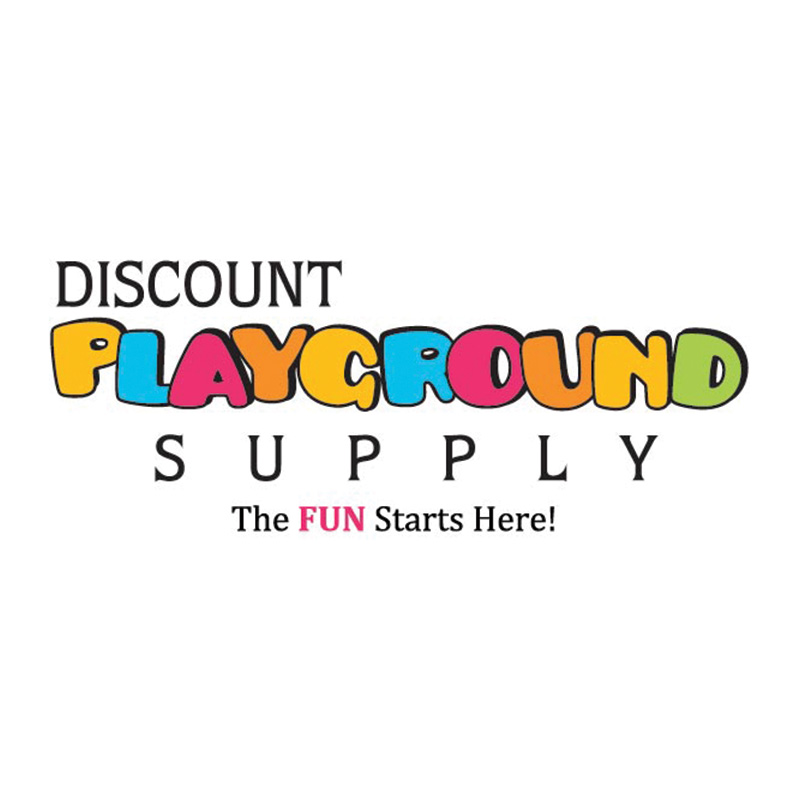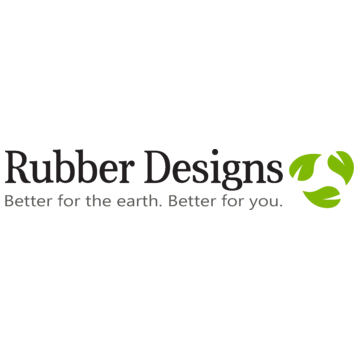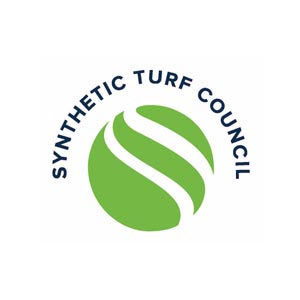Playground during the installation of under drainage and after with playground and surfacing completed.
If your playground has areas that have standing water or are often muddy, chances are your drainage system may not be working properly.
A playground with poor drainage can trap water on the playground safety surfacing for long periods of time leading to significant safety concerns.
The good news, a properly designed and maintained drainage system will keep your playground dry and safe.
What Good Drainage Means for the Playground
Often overlooked in the budget and design of a playground, the drainage system plays an integral part in ensuring your playground can be used as much as possible. Additionally, a good drainage system will allow your playground to dry quickly and be open for play a greater amount of the time.
- A drainage system enables you to realize several benefits:
- More use of the playground
- Longer lasting equipment
- Longer lasting safety surfacing
- Higher performing safety surfacing
Proper Planning Avoids Poor Performance
A quick walkthrough can reveal a lack of drainage or a poorly performing system. We often see water at slide exits, under swings, and around spinning equipment. We even hear customers or patrons mention, “There’s always water on the playground in this area.”
When we consult with our customers, we take a close look at the playground’s and surrounding area’s topography. We then work with the customer to figure out where the water is currently coming from or will be coming from in the future.
Sources of water can include:
- Only natural precipitation
- Drainage from a parking area
- Runoff from a rooftop
- Old drainage systems that are under-designed or have not been maintained
- Future development/construction
We can easily avoid complications and poor performance of the drainage system with the proper planning steps:
- Outlining where the water will be routed
- Ensuring there are no adverse effects on surrounding areas
- Installing a collector at the point where the water can be taken out of the playground
- Completing the playground design AFTER this step, routing the water based on the design to the collector
A usable, dry playground makes everyone happy.
A Puddle is Not Safe?
Making sure the foundation for the playground is safe, stable, and usable is critical.
Water trapped on the playground safety surfacing can cause significant safety concerns if the temperatures cause this trapped water to freeze. Frozen water in any safety surfacing can significantly degrade its ability to perform and attenuate impacts from falling. In the Fall and Spring, overnight temperatures can fall below freezing, and then the next day, rise to comfortable temperatures for playing outside. A significant amount of frozen water can essentially turn your safety surfacing into a block of ice!
With unitary surfaces, a constant freeze/thaw cycle will lift and deform your surfacing and you will see cracking, big chunks, and the surface pushing apart.
Loose-fill surfacing can also be displaced by water entering the playground. Not only can this cause a safety concern, but it also adds to the maintenance required to keep your playground safe.
Finally, if the surface and substrate are constantly wet, mold and mildew will grow and may attract unwanted insects.
Ensuring you have the right drainage system on your playground can pay off in spades, more time on the playground, longevity of the surfacing, and longevity of the play equipment.
Good drainage equals a safer, more playable, and longer-lasting playground.

